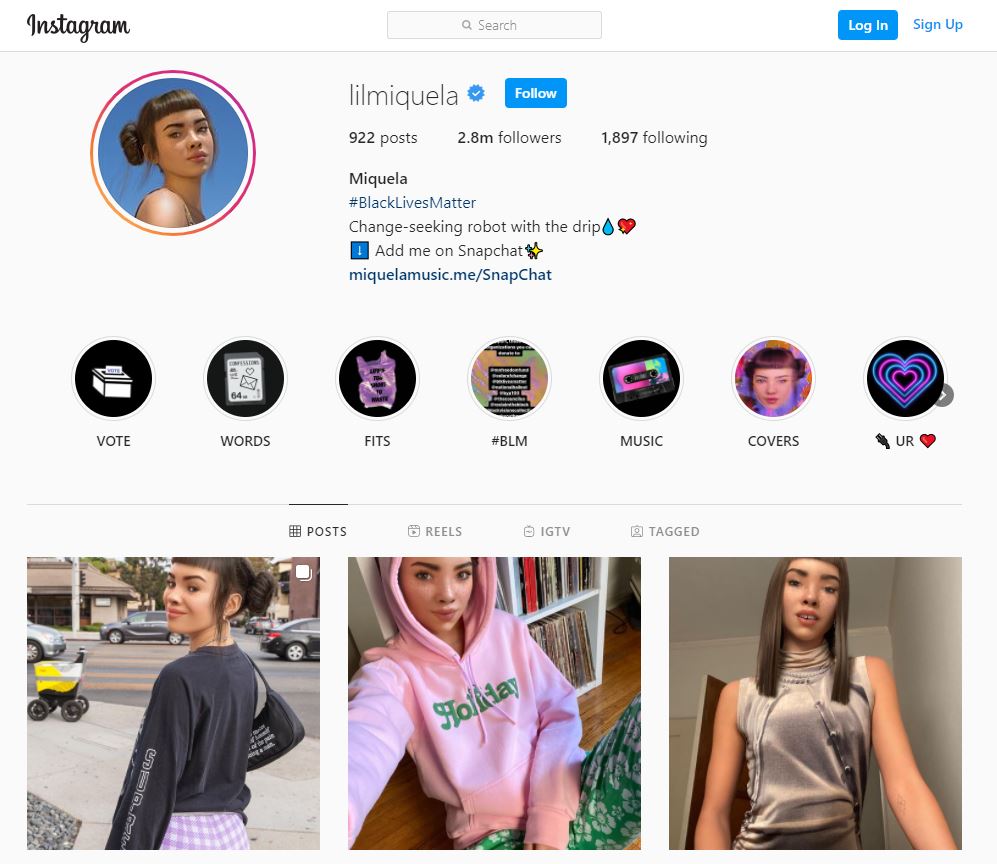We all know the typical influencer: pictures on the beach, doing yoga at sunset, have a cute dog and the perfect relationship. Good sense of style, is musically talented, goes to cool events and knows the right people. They sneak in a little paid partnership here and a promocode there, between comfy lounging on a couch and the occasional crazy after-party. Of course, it’s already been said many times that influencers only show the good sides of their life, and often we see a very limited part of what their actual daily lives are like. Behind every influencer is a real person with ups and downs like the rest of us. Except – that this isn’t entirely true anymore.
Some influencers are purely virtual. CGI (computer generated image) models are a growing industry. Many of these models also have their own social media platforms which they use much in the same way that celebrities and other influencers do to, well, influence their audience and develop their public image.

One such example that you may have heard of is Lil Miquela. Miquela exists only in the digital world, but her presence is big – she has 2.8 million followers on Instagram, releases her own music, has a Youtube channel on which she posts music her videos and vlogs. She even modeled for Calvin Klein, a very real brand, together with Bella Hadid, who’s an undeniably real celebrity. Yet, Miquela isn’t real. Her 19-year-old persona was created in 2016, for seemingly unknown reasons, by a company called Brud that specializes in CGI and AI technology. It is estimated that Miquela will make over 10 million dollars (for her creators) this year. Clearly,
The pandemic isn’t a problem when you’re computer-generated.
Bloomberg
The Diigitals takes CGI modelling to the next level. They are the “world’s first all digital modelling agency”. Their first model was created in 2017 as an art project, and goes by the name of Shudu. She was modelled after the Princess of South Africa Barbie. According to the website, “Shudu has a life of her own, and she hopes to champion diversity in the fashion world, collaborate with creators from emerging economies and under-represented communities and get together with up-and-coming designers.” Ama, the voice behind Shadu, says that they think a lot about the ethics behind what they are doing, and believes that these changes within the fashion industry are for the good. You can read more about what Ama thinks about creating a narrative for Shadu’s persona here.
Controversies about these digital people
Naturally, CGI models are a highly controversial topic. Some are worried that it will perpetuate body image issues. Being able to model a body after a Barbie doll, which already has a bad rep for exposing young girls to an unrealistic body type ideal, would only worsen this issue on social media, where a lot of young girls spend their time these days. On the other hand, models, influencers and celebrities already undergo plastic surgery and edit their photos in order to reach closer to the ideal female body. In that sense, the line between what’s real and what’s not real is becoming ever more blurry.
While Lil Miquela isn’t a real human, most simply because she has no physical mass in the real world, her persona and her digital activities have aspects of social reality. These extravirtual effects include having a real influence on people, making real money, art, and starting discussions such as this one. She supports the BLM movement in her profile, for example, which inspires real people to join the movement, too. While taking part in social movements and raising money for charity is probably considered ethical influence by many, this may not always be the case.
Using CGI models also bring up the issue of ethics. Normally, influencers have a say in what products they choose to endorse and when to say no. Humans have ethical boundaries which CGI models don’t have. Also, humans make errors and can be difficult to work with, which is not a problem for CGI. A company who owns a CGI influencer can fabricate any story which may benefit them in the long run (for example: Brud itself). There are as many more ways in which influencer power can be abused, as there are reasons to why they can benefit the fashion industry. As of now, there is no AI involved in the CGI influencers social media presence. However, since the future will probably keep progressing towards the use of CGI models and influencers, AI technology making them self-reliant may be what’s coming next in the quest of producing virtual people.
If you’re interested in more information on virtual influencers, check out this Vox article.



These AI-influencers are starting to get more real than reality and it scares me so bad. I find it weird that people actually like these kind of influencers over real people, although I do find it very cool that companies can actually make CGI look this real already, imagine the future possibilities. I hope that for as long as people are able to distinguish CGI-generated models and real people, they don’t stimulate insecurities too much. Maybe there should always be a disclaimer? As long as CGI models are run by actual people, I think the ethics and morals of these people will also apply to their CGI models, as long as they become actual AI, this might become more of a problem.